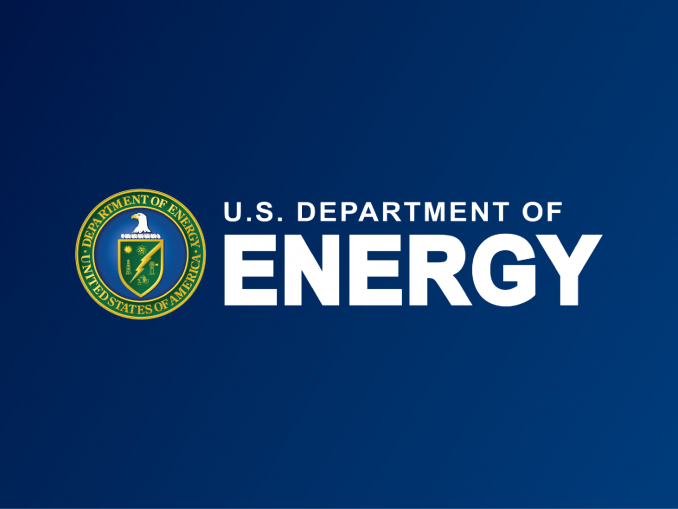WASHINGTON, D.C. — The U.S. Department of Energy (DOE) today announced the selection of eleven projects to receive $34 million for tools to advance a clean, reliable electricity grid run on wind and solar energy. DOE also announced a new $10 million funding opportunity to streamline the interconnection of clean energy to the grid. Together, these initiatives will enable grid planners, grid operators, and utility companies to optimally connect and manage renewable energy and battery storage resources on the electric grid, resulting in a reduction of extreme weather-related outages. This funding will cut wait times for projects to connect to the grid and help accelerate the reliable deployment of clean energy resources to achieve President Biden’s goal of 100% clean electricity by 2035.
“We can’t deploy clean energy if we can’t get renewable sources connected onto our grid,” said U.S. Secretary of Energy Jennifer M. Granholm. “Thanks to support from the Biden-Harris Administration, we are developing new, state-of-the-art tools to break up logjams to connect more clean energy sources to the grid even faster, giving Americans access to more affordable and resilient sources of clean energy.”
Improving Reliability on the Clean Energy Grid
Renewable generation accounts for as much as 21% of the U.S. electricity supply, and the share of clean energy from low cost renewables will need to increase to meet the country’s climate goals. As the power grid adds larger amounts of variable renewable energy resources like solar and wind, grid planners and operators need new tools to manage the intermittency of these generation technologies. This is especially true as rising temperatures worsened by climate change, retiring power plants, and increasing demand from massive electrification of building, transportation, and industrial sectors, put additional pressure on grid operations, including increased risk of blackouts, if reliability challenges are not addressed.
Projects selected for the Solar Energy Technologies Office’s Operation and Planning Tools for Inverter-Based Resource Management and Availability for the Future Power System (OPTIMA) funding program will advance tools that help grid planners and operators optimize the integration of these technologies. These tools will allow the grid to be more flexible and resilient to changes like weather events and fluctuation in demand.
The eleven projects are:
- Florida International University (Miami, FL): $2.4 million
- Washington State University (Pullman, WA) $2.4 million
- Georgia Institute of Technology (Atlanta, GA): $2.8 million
- Iowa State University (Ames, IA): $3 million
- Midcontinent Independent System Operator (Carmel, IN): $3 million
- National Renewable Energy Laboratory (Golden, CO): $3.2 million
- National Renewable Energy Laboratory (Golden, CO): $3.3 million
- University of Connecticut (Storrs, CT): $3.3 million
- Arizona State University (Tempe, AZ): $3 million
- Pacific Northwest National Laboratory (Richland, WA): $3.6 million
- Quanta Technology (Raleigh, NC): $3.8 million
Addressing Interconnection Challenges
Hundreds of gigawatts of solar energy, wind energy, and energy storage resources are expected to come online in the next few years. At the end of 2022, there were more than 2,000 gigawatts of solar, wind, and storage capacity sitting in transmission interconnection queues. As the number of requests to interconnect clean energy to the electric grid continues to rapidly increase, current procedures can’t keep up. To address interconnection challenges, DOE’s Solar Energy Technologies Office and Wind Energy Technologies Office released the $10 million Solar and Wind Interconnection for Future Transmission (SWIFTR) funding opportunity. The funding opportunity aims to improve software tools that make the interconnection study process for proposed renewable energy plants more efficient and that provide developers with key data on transmission system characteristics such as stability, voltage, and grid strength. These tools will reduce wait times so that new clean energy projects can come online faster to meet growing electricity demand and reduce outcome uncertainty for developers and utilities.
The SWIFTR funding opportunity is part of DOE’s Interconnection Innovation e-Xchange (i2X), which launched in 2022 with funding from the President’s Bipartisan Infrastructure Law to enable the faster, simpler, and fairer interconnection of clean energy and energy storage while enhancing the reliability, resilience, and security of our electric grid, for both distribution and bulk power systems. In 2023, i2X released a draft roadmap that outlines goals, solutions, and metrics for the transmission system interconnection process and complements the Federal Energy Regulatory Commission’s rule to reform interconnection procedures. The roadmap details steps that transmission providers can take to accelerate the interconnection process and bring new capacity online faster. The funding opportunity addresses two goals in the draft roadmap: maintaining a reliable and resilient grid and increasing interconnection data access and transparency.
Learn more about the Solar Energy Technologies Office, the Wind Energy Technologies Office, and the Interconnection Innovation e-Xchange.
Selection for award negotiations is not a commitment by DOE to issue an award or provide funding. Before funding is issued, DOE and the applicants will undergo a negotiation process, and DOE may cancel negotiations and rescind the selection for any reason during that time.
Originally published at https://www.energy.gov/articles/doe-invests-44-million-advance-clean-reliable-electric-grid
The post DOE Invests $44 Million to Advance a Clean, Reliable Electric Grid first appeared on Social Gov.

